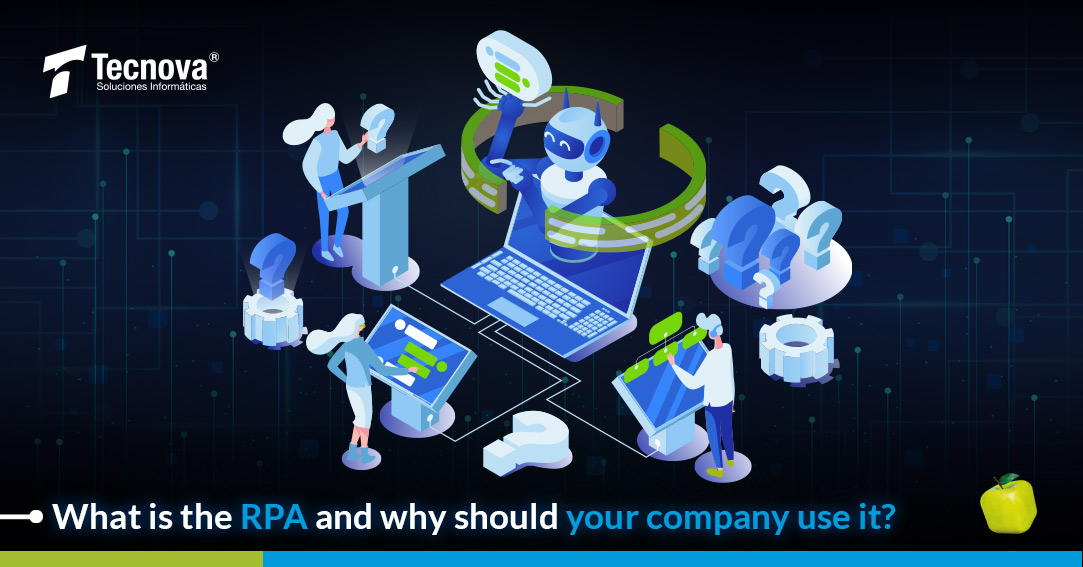RPA: What is process robotization?

Another of the trends in development that has left us this 2019 has been the RPA. We are talking about Robotic Process Automation (RPA) as a method of automating processes, mainly transactional, based on specific rules
And that doesn’t mean there are robots doing those processes. According to Deloitte, “it means software that learns from a business user and assists it with relatively simple tasks.” This implies that it is a tool that adapts to both the need of the company and to the way humans interact.
RPA technologies
RPA bots can log in to apps, enter data, calculate and complete tasks, and then log out. Currently, professionals divide RPA technologies into three categories:
- Probots are bots that follow simple, repeatable rules for processing data.
- Knowbots are bots that search the Internet to collect and store user-specified information
- Chatbots are virtual agents that can respond to customer queries in real time.
RPA software is not part of an organization’s IT infrastructure—it sits on it. This enables a company to deploy technology quickly and efficiently, without changing existing infrastructure and systems.
What sets RPA apart from traditional IT automation is the ability of RPA software to stay on top of and adapt to changing circumstances.
What processes and applications can be “robotized”?
THE RPA is best suited to repetitive, structured, and rule-driven tasks. For illustrative purposes, we show a few tasks that are susceptible, in the first instance, to being automated:
- Search for records.
- Filling out forms with the information already archived.
- Create, update, and delete records.
- Produce reports with a fixed structure and up-to-date data.
- Perform calculations.
- Archive complete transaction logs.
In view of this, not all processes are worthy of being submitted to the RPA. Processes susceptible to automation. To run applications in RPA, human input is required. That is, to confer on these robots the specific rules to carry out their objectives.
What are the benefits of RPA?
Robotic process automation technology can help organizations in their digital transformation journeys. According to TechTarget, the benefits of having RPA are:
- Allowing better customer service.
- Ensure that business operations and processes comply with regulations and standards.
- Processes are completed much faster.
- Improves the efficiency of the company by digitizing and auditing process data.
- Save resources for manual and repetitive tasks.
- Give workers roles to be more productive.
What does the RPA seek to do?
According to TechTarget, RPA technologies seek to perform a series of actions in the company where it is implemented:
- Scalability: Organizations should not select RPA software that needs to be deployed only on “desktops”. Businesses must hire RPAs that are centrally managed and massively scaled.
- Speed: Companies should design and test new robotic processes in a few hours or less, as well as optimize bots to run quickly.
- Reliability: As companies launch robots to automate hundreds or even thousands of tasks, they must implement tools with built-in monitoring and analysis. This would allow you to monitor the status of their systems.
- Simplicity: Organizations should look for products that are simple enough for any worker in the business to build and use to handle various types of work, including collecting data and converting content information.
- Intelligence: The best RPA tools can support simple task-based activities. Read and write to any data source and leverage the most advanced learning to further improve automation.
- Ideal for running processes in businesses: Businesses should look for tools that are built from the ground up for enterprise-grade scalability and reliability as well as manageability
At Tecnova we are ready to develop processes, where automation is the key axis.








